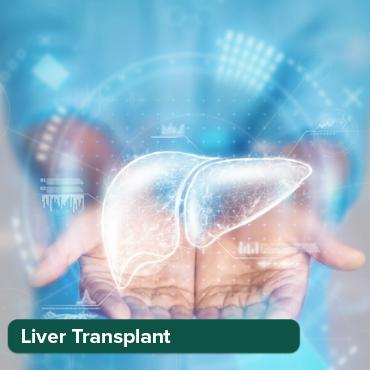
Radiation Therapy for Bladder Cancer Stages
25 Oct, 2024
 Healthtrip
HealthtripWhen it comes to battling bladder cancer, understanding the various treatment options is crucial in determining the best course of action. Radiation therapy is one such option that has proven to be effective in managing the disease, particularly for specific stages of bladder cancer. As we delve into the world of radiation therapy, it's essential to acknowledge the emotional turmoil that comes with a cancer diagnosis. Fear, anxiety, and uncertainty are natural responses, but arming oneself with knowledge can help alleviate some of that emotional burden. In this article, we'll explore the role of radiation therapy in treating bladder cancer, with a focus on its application for different stages of the disease.
Understanding Bladder Cancer Stages
Before diving into the specifics of radiation therapy, it's vital to understand the staging system for bladder cancer. The TNM staging system is commonly used to classify bladder cancer into stages, taking into account the tumor's size, location, and spread. The "T" denotes the tumor's size and invasion, "N" represents the involvement of lymph nodes, and "M" indicates the presence of metastases (cancer spread to other parts of the body). The stages range from 0 to IV, with higher stages indicating more advanced disease.
Most popular procedures in India
Early Stages (0-I)
In the early stages of bladder cancer, the tumor is confined to the inner lining of the bladder or has invaded the lamina propria (a layer of connective tissue). Radiation therapy may be used in combination with other treatments, such as transurethral resection (TURBT) or chemotherapy, to manage the disease. For stage 0, radiation therapy is not typically recommended, as the cancer is highly treatable with other methods. However, for stage I, radiation therapy may be used to reduce the risk of recurrence or to treat any remaining cancer cells after surgery.
Wellness Treatments
Give yourself the time to relax
Lowest Prices Guaranteed!

Lowest Prices Guaranteed!
Radiation Therapy for Bladder Cancer
Radiation therapy involves using high-energy radiation to kill cancer cells or slow their growth. In the context of bladder cancer, radiation therapy can be used to treat the primary tumor, reduce symptoms, or alleviate pain. There are two main types of radiation therapy: external beam radiation therapy (EBRT) and internal radiation therapy (brachytherapy). EBRT involves directing radiation beams from outside the body to the tumor site, while brachytherapy involves placing radioactive material inside the body, close to the tumor.
External Beam Radiation Therapy (EBRT)
EBRT is the most common type of radiation therapy used for bladder cancer. It can be used to treat the primary tumor, as well as any lymph nodes that may be affected. The treatment process typically involves 5-7 weeks of daily sessions, with each session lasting around 15-30 minutes. The radiation beams are carefully directed to minimize damage to surrounding tissues and organs. EBRT can be used alone or in combination with other treatments, such as chemotherapy.
Internal Radiation Therapy (Brachytherapy)
Brachytherapy is a type of internal radiation therapy that involves placing small radioactive implants directly into the bladder. This approach allows for a higher dose of radiation to be delivered directly to the tumor site, while minimizing damage to surrounding tissues. Brachytherapy is often used for early-stage bladder cancer, as it can help preserve the bladder and reduce the risk of recurrence.
Side Effects and Complications
While radiation therapy can be an effective treatment for bladder cancer, it's not without its side effects and complications. Common side effects include fatigue, urinary incontinence, and bowel changes. In some cases, radiation therapy can cause more severe complications, such as urinary tract infections, bladder contraction, or rectal bleeding. It's essential to discuss these potential risks with a healthcare provider and develop a plan to manage any side effects that may arise.
Conclusion
Radiation therapy plays a vital role in the treatment of bladder cancer, particularly for specific stages of the disease. By understanding the different types of radiation therapy and their applications, individuals can make informed decisions about their care. While the journey with bladder cancer can be daunting, arming oneself with knowledge and staying proactive can help alleviate some of the emotional burden. As we continue to advance in the field of cancer treatment, it's essential to stay informed and adapt to new developments, ultimately striving for better patient outcomes and improved quality of life.
Related Blogs

Bladder Cancer: Risk Factors and Symptoms
Stay informed about bladder cancer, its risk factors, and symptoms

Urinary Bladder Carcinoma Radiation Therapy and Palliative Care
Radiation therapy can provide palliative care for urinary bladder carcinoma

Radiation Therapy for Bladder Cancer in Elderly Patients
Radiation therapy is a suitable treatment option for elderly patients

Bladder Cancer Treatment with Radiation Therapy and Immunotherapy
Learn about the combination of radiation therapy and immunotherapy for

Urinary Bladder Carcinoma Radiation Therapy and Quality of Life
Radiation therapy can improve quality of life for urinary bladder

Bladder Cancer Radiation Therapy and Chemotherapy Side Effects
Learn about the side effects of combining radiation therapy and










